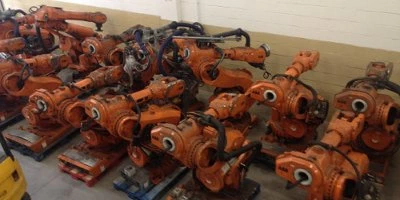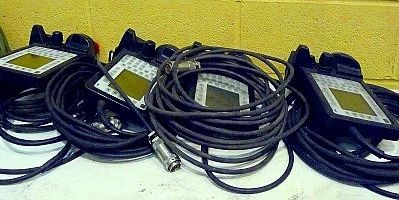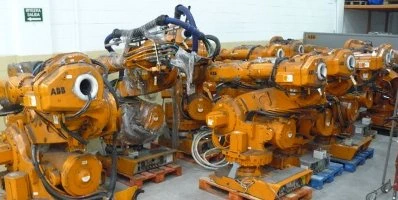What are Industrial Robots used for?
An industrial robot is the perfect machine for performing repetitive tasks with high precision and speed. That is why they are increasingly used in all sectors of the economy and in many manufacturing processes. We are also seeing them more and more often in processes which, because of their risk to people, are more appropriately carried out by machines.
In which sectors are Industrial Robots used?
The sectors in which the use of industrial robots predominates are undoubtedly the automotive, food and manufacturing sectors, although they are not the only ones.
Nowadays, due to their easy adaptation to repetitive processes, a growing number of sectors have machinery of this type within their production processes, such as the pharmaceutical industry, metallurgy, construction, plastic products, glass, furniture, the military sector, packaging, mining and more and more applications and sectors: creativity is the limit right now.



The first question that arises when deciding to automate a process is the suitability of an industrial robot. The applications of robots are numerous, from robotic welding to palletising, and it is certain that there are many more applications to be discovered in which an industrial robot can help us, even used or second-hand ones. So how do we know if it's the best choice? Here are some concepts to keep in mind that we hope will help.
1. Repetition:
The first and most obvious clue that leads us to the automation of a process is its repetition: robotics, like any automatic process, has its raison d'être in repetition: the more specific a process is, the more likely it is to cost to automate it.
2. Arm Reach:
The working area of our process can also tip the balance in favour or against the use of a robot: the reach of the largest robotic arm manufactured to date is 4,683mm, but most of the industrial robots used that we will find do not exceed 3,100mm by much. This feature can be particularly relevant for objects with certain shapes or dimensions. In addition to the reach of the robotic arm, we must also take into consideration the reach of the fixture that we install on it, which in turn will affect the parameters of the overall equipment.
3. Payload:
The weight to be moved is another factor to take into account, since, although there are robots capable of moving up to 1,650kg, most of the robots on the market have a maximum tip load of no more than 360kg. Again, the weight of the tool installed on the wrist must be taken into account, as this will affect the weight and parameters such as total torque.
4. Space:
A typical industrial robot will need a working space: this space must be enclosed and comply with the safety regulations in force in the territory. Although the cost of the safety elements is a secondary detail, the space to be occupied is a determining factor to be taken into account.
5. Robot performance:
A robot with certain features may mean an increase in the acquisition cost, but it is important to calculate the process well, as a second in the speed of a process can have repercussions on production and more than compensate for the acquisition cost.
6. Ease of operation:
If we have experience in handling industrial robots, we know that the ease with which we can communicate with it will influence programming times and costs.
7. Price:
What is the cost of our current process and what is the cost of the automation project will give us many clues as to how long it will take to amortise our investment and whether it is profitable. Taking out the calculator and thinking a little will save us a lot of headaches.
8. Engineering:
A fundamental step to take before deciding on one industrial robot or another will be to contact a specialised engineering company: in addition to orienting us with the robot itself, it will help us to calculate the costs accurately.
There is a growing need to update traditional manufacturing processes to the automated environment: it is key to the competitiveness of companies today and will be even more so in the future, as shown by the growing importance of industrial robots around the world. The lack of updating and modernisation of processes, linked to the need to adjust costs, has for decades led to the relocation of production sites and small and medium-sized companies to an increasing competitive imbalance: a very productive and consistent solution at all levels lies in the use of industrial robots for the automation of all those processes that allow costs to be adjusted and competitiveness to be increased.
Robots Gallery buys, reconditions and sells used industrial robots across the globe. Through recycling and reuse we provide an average saving of 45% on the investment in industrial robots, providing equipment with a long life ahead of it, fully functional, guaranteed, and amortizable in more affordable terms. Furthermore, working with the best welding specialists, we offer second-hand industrial robots already equipped for welding and we provide our customers with contact with engineering companies specialised in the execution of turnkey robotised welding products.
Whatever your needs, we will find a suitable solution.
